Balkinization
an unanticipated consequence of
Jack M. Balkin
Balkinization Symposiums: A Continuing List
E-mail:
Jack Balkin:
jackbalkin at yahoo.com
Bruce Ackerman
bruce.ackerman at yale.edu
Ian Ayres
ian.ayres at yale.edu
Corey Brettschneider
corey_brettschneider at brown.edu
Mary Dudziak
mary.l.dudziak at emory.edu
Joey Fishkin
joey.fishkin at gmail.com
Heather Gerken heather.gerken at yale.edu
Abbe Gluck abbe.gluck at yale.edu
Mark Graber
mgraber at law.umaryland.edu
Stephen Griffin
sgriffin at tulane.edu
Jonathan Hafetz
jonathan.hafetz at shu.edu
Jeremy Kessler
jkessler at law.columbia.edu
Andrew Koppelman
akoppelman at law.northwestern.edu
Marty Lederman
msl46 at law.georgetown.edu
Sanford Levinson
slevinson at law.utexas.edu
David Luban
david.luban at gmail.com
Gerard Magliocca
gmaglioc at iupui.edu
Jason Mazzone
mazzonej at illinois.edu
Linda McClain
lmcclain at bu.edu
John Mikhail
mikhail at law.georgetown.edu
Frank Pasquale
pasquale.frank at gmail.com
Nate Persily
npersily at gmail.com
Michael Stokes Paulsen
michaelstokespaulsen at gmail.com
Deborah Pearlstein
dpearlst at yu.edu
Rick Pildes
rick.pildes at nyu.edu
David Pozen
dpozen at law.columbia.edu
Richard Primus
raprimus at umich.edu
K. Sabeel Rahmansabeel.rahman at brooklaw.edu
Alice Ristroph
alice.ristroph at shu.edu
Neil Siegel
siegel at law.duke.edu
David Super
david.super at law.georgetown.edu
Brian Tamanaha
btamanaha at wulaw.wustl.edu
Nelson Tebbe
nelson.tebbe at brooklaw.edu
Mark Tushnet
mtushnet at law.harvard.edu
Adam Winkler
winkler at ucla.edu
Compendium of posts on Hobby Lobby and related cases
The Anti-Torture Memos: Balkinization Posts on Torture, Interrogation, Detention, War Powers, and OLC
The Anti-Torture Memos (arranged by topic)
Recent Posts
Where the Ruling Class Went to Rule – Law’s Violence in the Era of William Howard Taft
Just A Few Blogs
ACS Blog
Alas, a Blog
Althouse
Arts and Letters Daily
Atrios (Eschaton)
Bill of Health
Buzzflash.com
Buzz Machine
Cato at Liberty
Juan Cole (Informed Comment)
Concurring Opinions
The Constitution in 2020
Corrente
Crooked Timber
Daily Howler
Daily Kos
Dana Boyd
Brad DeLong
Digby (Hullabaloo)
Discriminations
Daniel Drezner
Kevin Drum (Mother Jones)
Electrolite
En Banc
Eunomia (Daniel Larison)
Fafblog
Michael Froomkin (Discourse.net)
GovLab (Beth Noveck)
Rick Hasen (Election Law)
History News Network
How Appealing
Ignatz (Sam Heldman)
The Importance of (Ernie Miller)
Infolaw
Instapundit
International Economic Law and Policy Blog
IntLawGrrls
Jacob Levy
Jesus' General
Jurisdynamics
The Kitchen Cabinet
Mark Kleiman
Law Blog Central
Larry Lessig
Lawyers, Guns and Money
Liberal Oasis
Brian Leiter's Law School Reports
The Leiter Reports
Marginal Revolution
Megan McArdle
Memeorandum
Metafilter
Mirror of Justice
The New Republic
Newseum
No More Mister Nice Blog
Brendan Nyhan
Opinio Juris
Orcinus
The Originalism Blog
Pandagon
Passport (Foreign Policy)
Overcoming Bias
Political Animal (Washington Monthly)
Political Theory Daily Review
Political Wire (Taegan Goddard)
The Poor Man
Virginia Postrel
Prawfsblawg
Public Reason
Jonathan Rauch
Raw Story
Redstate
ReligiousLeftLaw.com
Reporters Committee For Freedom of the Press
Reproductive Rights Blog
Rothman's Roadmap to the Right of Publicity
SCOTUS Blog
Seeing the Forest
Clay Shirky
The Shifted Librarian
The Situationist
Larry Solum (Legal Theory)
Andrew Sullivan
Talking Points Memo
Talk Left
Tapped
Tbogg
TechPresident
The Paper Chase (Jurist)
Tom Paine
Tom Tomorrow (This Modern World)
Eve Tushnet
Uggabugga
University of Chicago Law School Faculty Blog
Unqualified Offerings
The Volokh Conspiracy
War and Piece (Laura Rozen)
Wampum
Oliver Willis
Wonkette
Written Description
Matthew Yglesias
Yin
Your Choice of Feeds
1. XML
powered by
2. Atom Feed
3. RSS 2.0
Where the Ruling Class Went to Rule – Law’s Violence in the Era of William Howard Taft
Guest Blogger
For the Balkinization symposium on Robert Post, The Taft Court: Making Law for a Divided Nation, 1921–1930 (Cambridge University Press, 2024). William Forbath Robert Post’s two-volume Holmes Devise
History of the Taft Court is a tour de force.
Told to adopt “a foreshortened,
thematic approach to the material,” but unable to forgo the traditional mission
of the Holmes Devise volumes as an authoritative “history of record,” Post has
done both. At least so it is with the
chapters on labor law and race and equal protection that I’ve been
assigned. They clock in at 301 pages; 212
pages and four chapters on labor, and a more modest 89 pages and one chapter on
race and equal protection. The imbalance
reflects Post’s judgment that equal protection in the Taft Court’s hands served
as a minor, auxiliary tool for safeguarding corporations, while doing nothing
to protect Black America from Jim Crow. By contrast, court-minted labor law and
“government by injunction” made the federal judiciary the nation’s key organ
for governing industrial conflict, an aggressive, widely contested and deeply
controversial position in national life that Taft and his Court defended
against major political assaults. Brilliantly detailed about doctrinal
development, these five chapters also succeed in situating these developments
in their “cultural context” and in offering splendid distillations of the
political currents and clashes that shaped the Court’s work. The chapters brim with an historian’s rich
sense of irony and a theorist’s eye for deep dialectal tensions, while the
footnotes provide more layers of doctrinal detail as well as much revealing
private correspondence along with coverage of the Court’s work by law reviews,
mainstream papers, conservative and
progressive journals of opinion, and a sampling of the labor and a bit of the
Black press (at least, the NAACP’s Crisis). Post has graced readers with such a rich
account of the Court’s work and its contexts that one can fashion an
interpretation of the history quite different from his own, based largely on
the evidence he has painstakingly assembled.
And so, I find myself thinking about
Post’s Chief Justice Taft in the labor arena.
Post’s Taft has complex, many-sided, and evolving views about the Labor
Question and the allowable bounds of union organizing and collective
action. All in all, Post reckons that
Taft’s and the Taft Court’s important labor opinions were a mixed bag; some
conservative, some downright reactionary, others partaking of a Progressive
spirit. There were, in Post’s view,
enough of the latter to warrant the conclusion that the Court did much to help
Americans adjust to the vital role of organized labor in industrial life, even though
the Court’s imperious posture ended up bringing “government by [labor]
injunction” to a crashing end with Norris-LaGuardia, two years after Taft
departed. That’s a generous and nuanced interpretation
of the record, rich with insight. It’s not my assessment and not the only way to
read Post’s labor chapters. Post’s account of equal protection and race
is the last one of my assignment, but it’s where I’ll begin. It is shorter and harsher. There is more to say about the constitutional
politics of race in this era, and others in this symposium, with greater
knowledge, will no doubt add to it. But
what Post does say strikes me as right on the mark, and it’s a good foil for my
views on the labor chapters. Post begins
his race chapter with the Court’s ready use of equal protection to strike down
state measures that discriminated against either foreign corporations or
corporations writ large, over against other economic actors, and contrasts this
with the Court’s refusal to wield equal protection to assail “deeply entrenched institutions of racial and
ethnic segregation.” Post underscores the crucial ideological and
conceptual work that “separate but equal” and “social [versus civil and
political] equality” did for the Court – work he roots in the tasks these
notions performed for Northern Republicans at large. Leading Republicans like Taft could never
“endorse outright white supremacy” without abandoning the Party’s “ideals of
political and economic equality.” Yet,
to appeal to Southern whites, they embraced the idea that the races were
“separate and distinct” and their differences “eternal” and “inescapable.” Plessy’s “separate but equal” formula
and its repudiation of “social equality” supplied the solution to this “puzzle.” The Court could strike down a few stark
racial classifications and exclusions, while upholding segregation in schools
and elsewhere, and rejecting challenges to Western states’ racist alien land
laws, along with white primaries (as long as they weren’t codified in statutes),
and much else. The Party and the Court,
as well, of course, as Northern Democrats, all took on board the assurances of Southern
white Progressives like Woodrow Wilson that segregation and disenfranchisement
were the enlightened alternatives to race war. All this is familiar. More interesting is how Post dramatizes the
continuities between Taft’s judicial disposition and his personal involvements
as a tirelessly conscientious member of the ruling class. From 1914 until his death, Taft served as
president of the board of trustees of Virginia’s famous, historically Black, Hampton
Institute, originally Hampton Agricultural and Industrial School and later Hampton
University. Post nicely chronicles how
Taft managed to safeguard Hampton’s practice of integrating audiences at its
music concerts while managing to appease white Virginian lawmakers’ and
opinion-makers’ (including, of course, the state’s leading white Progressives’)
efforts to bring the Institute into line with all-encompassing segregation. Taft’s solution: No longer would the concerts
be open to the public. It
is a revealing and emblematic tale, and Post tells it without losing critical distance
from his genial subject. The upshot of
the Court’s race jurisprudence was to continue shutting out most of Black
America from the promises of civil and political equality. Along with the Chief, the “entire…Court was
willing to accept” the view that “social segregation was required by the
irresistible ‘racial instincts’ of the American people” and “content to allow
the nation’s ‘racial instincts’ to play themselves out in terrible and
consequential ways.” When it comes to labor, Post renders no
such harsh final judgment on the Chief and his Court. He gives their labor jurisprudence a
decidedly more complicated, and somewhat elusive, mixed review. I’ll suggest that this body of law may be more
clearly seen in much the same way Post views the Court on race. Just as “separate but equal” supplied a
serviceable formula for validating Jim Crow while proclaiming fidelity to equal
rights, so what Taft called “responsible unionism” provided a Progressive
veneer for validating a decade of violent repression and outlawry for a vast
swath of ordinary efforts at labor organizing and all of workers’ most effective
forms of solidarity and peaceful collective action. Through that simpler and more critical lens
one might observe, the Court sanctioned a tidal wave of federal, state, and (deputized)
private violence against hundreds of strikes and boycotts; it hammered out the
terms on which that violence was sanctioned and led the federal judiciary in
calling it forth. Something like 25% of
all recorded strikes and boycotts were enjoined by federal and state courts in
the Taft era, and the Court’s harsh limits on allowable strikes and boycotts
legitimated the repression of many more during this decade. The
U.S. saw more state violence, deaths, casualties, and prison terms meted out
against trade unionists and striking workers than any of the world’s other
leading industrial nations in this era. To be sure, most of the nation’s elites
and much of the rest of the country deplored strikes and the violence that
attended them. Nevertheless, the Court and
the federal judiciary it directed played a big part in the U.S.’s grim record
of state violence, in the demolition of scores of more or less radical, more or
less moderate building blocks of “industrial democracy” on offer from the
decade’s reformers in Congress, state legislatures, civil society, and the
labor movement itself, and in the blockage of some more equitable class
compromise in these years. When it came
to labor-capital relations and the fate of trade unionism, the Court was where
the ruling class went to rule. Post is right, I think, that in many
crucial domains like antitrust, railroad regulation, and executive power, Chief
Justice Taft’s jurisprudence reflected a modern, pragmatic, managerial- and
business-minded reformer’s Progressive sensibility and outlook. He is right that some of Taft’s opinions in
those arenas are downright “majestic.”
And so too Taft’s outsized accomplishments in pushing through
epoch-making reforms of the Supreme Court’s role in the federal judiciary as
well as the construction of the Supreme Court’s monumental modern home. But to my thinking, the Progressive strain
in Taft’s labor jurisprudence was savvy window dressing; practically speaking,
it didn’t amount to a hill of beans. As Post chronicles, in the 1890s, during his
stint as a Circuit Court Judge, Taft gained prominence as architect of the
labor injunction’s legal framework. Taft
earned the sobriquet “father of the labor injunction” and as President,
staunchly defended the legal and constitutional primacy of equity courts in
managing industrial conflict and safeguarding the rights of “capital,” over
against unions and against the gusty, unthinking passions of majorities of voters
and lawmakers. In his first
Inaugural Address, President Taft declared: Take
away from the courts, if it could be taken away, the power to issue injunctions
in labor disputes, and it would create a privileged class among the laborers,
and save the lawless among their number from a most needful remedy available to
all men for the protection of their business against lawless invasion. The
proposition that business is not a property or pecuniary right which can be protected
by equitable injunction is utterly without foundation in precedent or reason. Taft, and Post, neglect to mention that
what legal historians have called the “property-ization” of business goodwill
and the uninterrupted flow of labor into capital’s factories and mills was
itself a late 19th century artefact of the fashioning of an
equitable remedy against labor boycotts and strikes. More important, though, is what Post does
highlight: Back on the bench as Chief Justice, Taft never wavered from the view
that among the “lawless invasion[s],” which courts were obliged to condemn was
any form of boycott against “unfair goods” produced by non-union labor along
with almost any other kind of “secondary action,” no matter how peaceful, on
the part of workers, against any employer not their own. When it came to labor, the strong could not
come to the aid of the weak. Unionized workers could not refuse to work on
material even from non-union firms in their own communities, which their own
unions were seeking to organize. Nor
could unions publish the names of “unfair” firms and urge communities not to
patronize them. Post omits a famous (among labor law
historians) bloodthirsty passage in Taft’s private correspondence about the need
for troops to mow down more strikers.
But he retrieves many other revealing gems about the new Chief’s efforts
to prevent any more judicial appointments in the Brandeis mold: jurists bent on
tearing down the Constitution’s eternal safeguards for the rights of property –
and about the aging Chief’s determination to remain on the bench “to prevent
the Bolsheviki from getting control.” Post’s “Progressive” Taft-on-labor flows from
Taft’s important stint as a chair of the World War I era War Labor Board,
rubbing shoulders and shaking hands with key labor leaders and speaking warmly
of the necessity of “the group system” in managing modern industry. As for jurisprudence, Post rightly notes: Taft “was prominent among conservatives for
standing staunchly for the right of labor unions to exist and for the right of
union members to choose their own leaders.”
Moreover, Taft authored a few noteworthy decisions, upholding the
requirement of juries in criminal proceedings against strikers and slightly
(and ineffectually) hemming in the wild reach of federal injunctions against
primary strikes that interrupted the flow of goods bound for interstate
commerce. Like I said, not much. Finally, Post sternly observes how shaky the
legal-analytic ground was for Taft’s remarkably reactionary opinions striking
down legislative efforts to curb “government by injunction.” And his footnotes detail how labor leaders
and Progressive lawmakers in the Taft era responded with efforts to enact what
we’d call “court reforms” – abolishing judicial review of federal legislation,
requiring super-majorities for such decisions, or providing legislative or
popular recall of them, along lines of what constitutional scholars now call
dialogical constitutionalism, although Post leaves it to the reader to see the
resemblance. Missing from Post’s account entirely,
though, is the fact that these legislative efforts at Court-curbing were
accompanied by a decades-long, high-profile campaign of official defiance of
anti-strike and anti-boycott decrees on the part of stodgy conservative labor
leaders and radicals alike, and countless workers, who served serious jail time
– all in the name of a richly elaborated rival moral and constitutional
order. This movement constitutionalism,
built around the first, thirteenth, and fourteenth amendments and the guarantee
clause, flowed into Congressional hearings and testimony, and thence, into the
discourse of lawmakers, legislation, and, of course, into Brandeis’s dissents. The Taft Court, in a word, was, or did its
best to be, what Bob Cover - Post’s colleague and predecessor charged with
writing the Taft Court volume(s) – called “jurispathic” vis a vis this rival
constitutional order, just as lower courts, who put down boycotts aimed at enforcing
union rules and standards, were jurispathic in their violent rage at trade
unionists with their rival laws. These rival legal and constitutional claims
of right were vital to the workers who needed moral ground to stand on in the
face of jail time and widely publicized judicial condemnation and vital to the political
and legislative work of opposing the Court’s law. They seem worth remembering today and in a
possible future when labor law reforms – finally repealing the present Taft-ian
bars on boycotts and secondary actions - may get enacted, and face formidable
constitutional challenges in public debate and in our own reactionary Court. Or so it seems to me, after reading Post’s
magisterial work. Post won’t remember,
I’m sure; but ages ago, he said to me, “You’re writing for some imagined social
movement.” And he had a point. For his part, Post writes with a great
historian’s gift for entering imaginatively into his subject’s world; and when
he comments on that world, he does so in a more sympathetic and ironic
voice. Minerva’s owl has flown. Thus, Post’s epigram, from Gramsci: History
teaches, but it has no pupils. On the other hand, Post’s dedication strikes
a different note: To Shiloh and Willa / May they inhabit a future that has learned from its past. In the tension between the two, sit these
magnificent volumes. William Howard
Taft and his Court could not have dreamed of a better, fairer chronicle.
Posted
9:30 AM
by Guest Blogger [link]
Books by Balkinization Bloggers

Linda C. McClain and Aziza Ahmed, The Routledge Companion to Gender and COVID-19 (Routledge, 2024)

David Pozen, The Constitution of the War on Drugs (Oxford University Press, 2024)

Jack M. Balkin, Memory and Authority: The Uses of History in Constitutional Interpretation (Yale University Press, 2024)
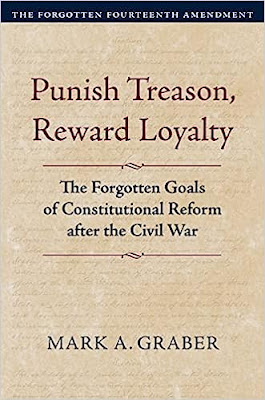
Mark A. Graber, Punish Treason, Reward Loyalty: The Forgotten Goals of Constitutional Reform after the Civil War (University of Kansas Press, 2023)
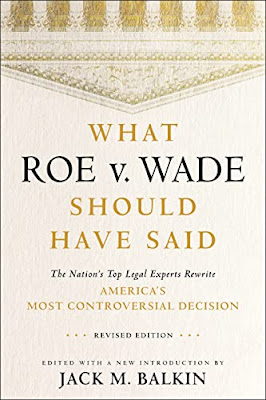
Jack M. Balkin, What Roe v. Wade Should Have Said: The Nation's Top Legal Experts Rewrite America's Most Controversial Decision - Revised Edition (NYU Press, 2023)

Andrew Koppelman, Burning Down the House: How Libertarian Philosophy Was Corrupted by Delusion and Greed (St. Martin’s Press, 2022)

Gerard N. Magliocca, Washington's Heir: The Life of Justice Bushrod Washington (Oxford University Press, 2022)
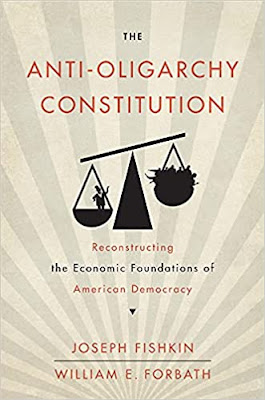
Joseph Fishkin and William E. Forbath, The Anti-Oligarchy Constitution: Reconstructing the Economic Foundations of American Democracy (Harvard University Press, 2022)
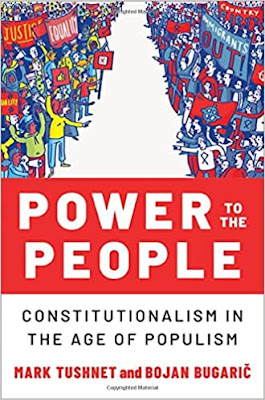
Mark Tushnet and Bojan Bugaric, Power to the People: Constitutionalism in the Age of Populism (Oxford University Press 2021).

Mark Philip Bradley and Mary L. Dudziak, eds., Making the Forever War: Marilyn B. Young on the Culture and Politics of American Militarism Culture and Politics in the Cold War and Beyond (University of Massachusetts Press, 2021).

Jack M. Balkin, What Obergefell v. Hodges Should Have Said: The Nation's Top Legal Experts Rewrite America's Same-Sex Marriage Decision (Yale University Press, 2020)

Frank Pasquale, New Laws of Robotics: Defending Human Expertise in the Age of AI (Belknap Press, 2020)

Jack M. Balkin, The Cycles of Constitutional Time (Oxford University Press, 2020)

Mark Tushnet, Taking Back the Constitution: Activist Judges and the Next Age of American Law (Yale University Press 2020).

Andrew Koppelman, Gay Rights vs. Religious Liberty?: The Unnecessary Conflict (Oxford University Press, 2020)

Ezekiel J Emanuel and Abbe R. Gluck, The Trillion Dollar Revolution: How the Affordable Care Act Transformed Politics, Law, and Health Care in America (PublicAffairs, 2020)

Linda C. McClain, Who's the Bigot?: Learning from Conflicts over Marriage and Civil Rights Law (Oxford University Press, 2020)
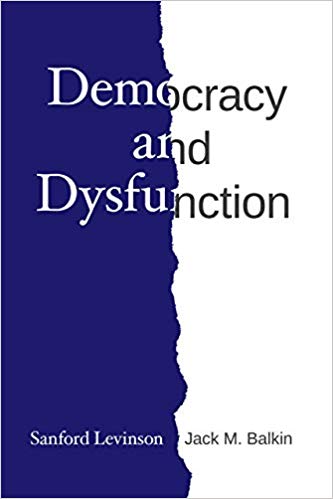
Sanford Levinson and Jack M. Balkin, Democracy and Dysfunction (University of Chicago Press, 2019)

Sanford Levinson, Written in Stone: Public Monuments in Changing Societies (Duke University Press 2018)

Mark A. Graber, Sanford Levinson, and Mark Tushnet, eds., Constitutional Democracy in Crisis? (Oxford University Press 2018)

Gerard Magliocca, The Heart of the Constitution: How the Bill of Rights became the Bill of Rights (Oxford University Press, 2018)

Cynthia Levinson and Sanford Levinson, Fault Lines in the Constitution: The Framers, Their Fights, and the Flaws that Affect Us Today (Peachtree Publishers, 2017)

Brian Z. Tamanaha, A Realistic Theory of Law (Cambridge University Press 2017)

Sanford Levinson, Nullification and Secession in Modern Constitutional Thought (University Press of Kansas 2016)

Sanford Levinson, An Argument Open to All: Reading The Federalist in the 21st Century (Yale University Press 2015)

Stephen M. Griffin, Broken Trust: Dysfunctional Government and Constitutional Reform (University Press of Kansas, 2015)

Frank Pasquale, The Black Box Society: The Secret Algorithms That Control Money and Information (Harvard University Press, 2015)

Bruce Ackerman, We the People, Volume 3: The Civil Rights Revolution (Harvard University Press, 2014)
Balkinization Symposium on We the People, Volume 3: The Civil Rights Revolution

Joseph Fishkin, Bottlenecks: A New Theory of Equal Opportunity (Oxford University Press, 2014)

Mark A. Graber, A New Introduction to American Constitutionalism (Oxford University Press, 2013)

John Mikhail, Elements of Moral Cognition: Rawls' Linguistic Analogy and the Cognitive Science of Moral and Legal Judgment (Cambridge University Press, 2013)

Gerard N. Magliocca, American Founding Son: John Bingham and the Invention of the Fourteenth Amendment (New York University Press, 2013)

Stephen M. Griffin, Long Wars and the Constitution (Harvard University Press, 2013)

Andrew Koppelman, The Tough Luck Constitution and the Assault on Health Care Reform (Oxford University Press, 2013)

James E. Fleming and Linda C. McClain, Ordered Liberty: Rights, Responsibilities, and Virtues (Harvard University Press, 2013)
Balkinization Symposium on Ordered Liberty: Rights, Responsibilities, and Virtues

Andrew Koppelman, Defending American Religious Neutrality (Harvard University Press, 2013)

Brian Z. Tamanaha, Failing Law Schools (University of Chicago Press, 2012)

Sanford Levinson, Framed: America's 51 Constitutions and the Crisis of Governance (Oxford University Press, 2012)

Linda C. McClain and Joanna L. Grossman, Gender Equality: Dimensions of Women's Equal Citizenship (Cambridge University Press, 2012)

Mary Dudziak, War Time: An Idea, Its History, Its Consequences (Oxford University Press, 2012)

Jack M. Balkin, Living Originalism (Harvard University Press, 2011)

Jason Mazzone, Copyfraud and Other Abuses of Intellectual Property Law (Stanford University Press, 2011)

Richard W. Garnett and Andrew Koppelman, First Amendment Stories, (Foundation Press 2011)

Jack M. Balkin, Constitutional Redemption: Political Faith in an Unjust World (Harvard University Press, 2011)

Gerard Magliocca, The Tragedy of William Jennings Bryan: Constitutional Law and the Politics of Backlash (Yale University Press, 2011)

Bernard Harcourt, The Illusion of Free Markets: Punishment and the Myth of Natural Order (Harvard University Press, 2010)

Bruce Ackerman, The Decline and Fall of the American Republic (Harvard University Press, 2010)
Balkinization Symposium on The Decline and Fall of the American Republic

Ian Ayres. Carrots and Sticks: Unlock the Power of Incentives to Get Things Done (Bantam Books, 2010)

Mark Tushnet, Why the Constitution Matters (Yale University Press 2010)
Ian Ayres and Barry Nalebuff: Lifecycle Investing: A New, Safe, and Audacious Way to Improve the Performance of Your Retirement Portfolio (Basic Books, 2010)
.jpg)
Jack M. Balkin, The Laws of Change: I Ching and the Philosophy of Life (2d Edition, Sybil Creek Press 2009)

Brian Z. Tamanaha, Beyond the Formalist-Realist Divide: The Role of Politics in Judging (Princeton University Press 2009)
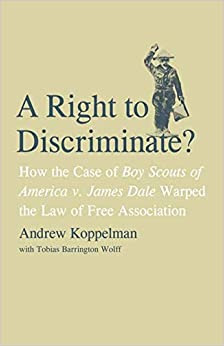
Andrew Koppelman and Tobias Barrington Wolff, A Right to Discriminate?: How the Case of Boy Scouts of America v. James Dale Warped the Law of Free Association (Yale University Press 2009)

Jack M. Balkin and Reva B. Siegel, The Constitution in 2020 (Oxford University Press 2009)
Heather K. Gerken, The Democracy Index: Why Our Election System Is Failing and How to Fix It (Princeton University Press 2009)

Mary Dudziak, Exporting American Dreams: Thurgood Marshall's African Journey (Oxford University Press 2008)

David Luban, Legal Ethics and Human Dignity (Cambridge Univ. Press 2007)

Ian Ayres, Super Crunchers: Why Thinking-By-Numbers is the New Way to be Smart (Bantam 2007)

Jack M. Balkin, James Grimmelmann, Eddan Katz, Nimrod Kozlovski, Shlomit Wagman and Tal Zarsky, eds., Cybercrime: Digital Cops in a Networked Environment (N.Y.U. Press 2007)
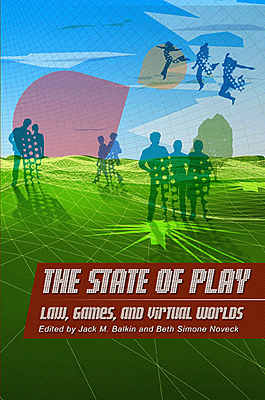
Jack M. Balkin and Beth Simone Noveck, The State of Play: Law, Games, and Virtual Worlds (N.Y.U. Press 2006)

Andrew Koppelman, Same Sex, Different States: When Same-Sex Marriages Cross State Lines (Yale University Press 2006)
Brian Tamanaha, Law as a Means to an End (Cambridge University Press 2006)
Sanford Levinson, Our Undemocratic Constitution (Oxford University Press 2006)
Mark Graber, Dred Scott and the Problem of Constitutional Evil (Cambridge University Press 2006)
Jack M. Balkin, ed., What Roe v. Wade Should Have Said (N.Y.U. Press 2005)
Sanford Levinson, ed., Torture: A Collection (Oxford University Press 2004)
Balkin.com homepage
Bibliography
Conlaw.net
Cultural Software
Writings
Opeds
The Information Society Project
BrownvBoard.com
Useful Links
Syllabi and Exams